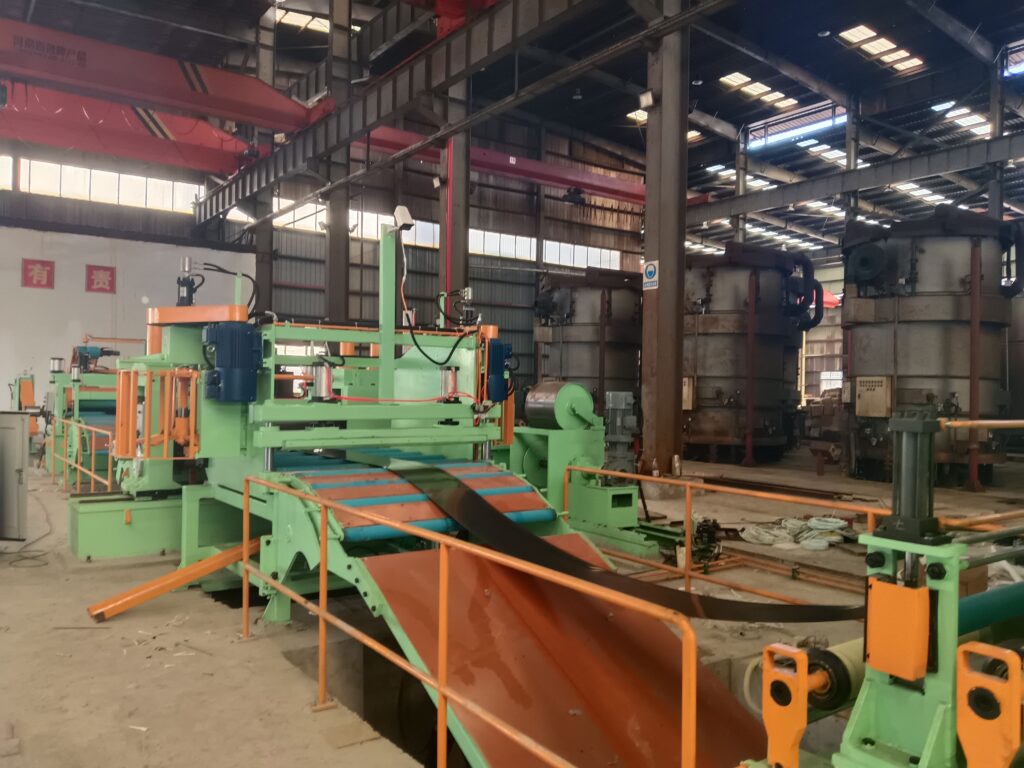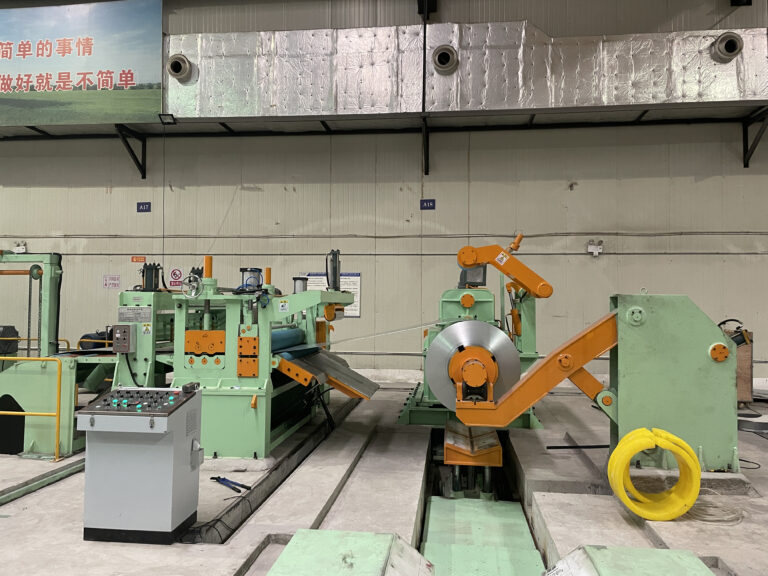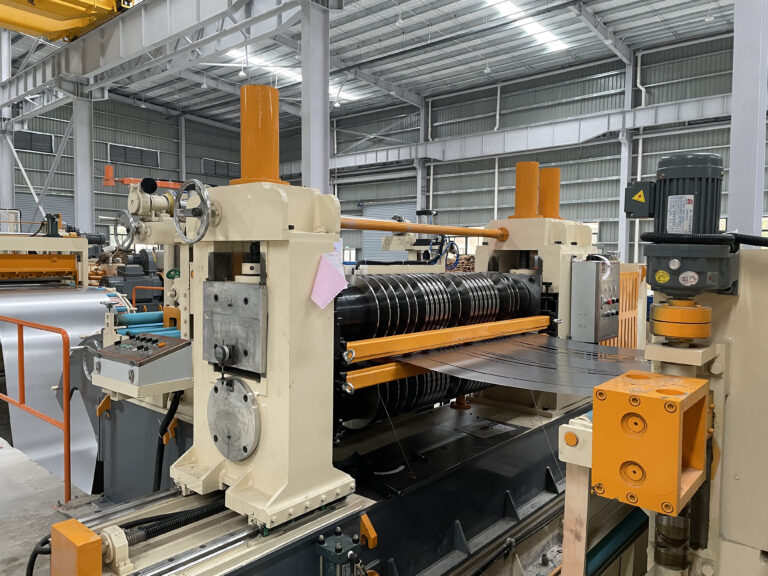Cut-to-Length Lines Simplified: A Manufacturer’s Insight
Essential to any CTL setup are three core elements: the uncoiler for material feed, the leveling and shear unit for flattening and cutting, and the stacking system for output handling.
Cut-to-Length Lines Explained
At MaxDo Machinery, we recognize the complexities of modern metal fabrication, where demand for flat, precisely dimensioned sheets drives innovation in coil processing. Our advanced cut-to-length (CTL) systems, supported by cutting-edge automation and shear technology, enable fabricators to achieve superior flatness and length accuracy for applications in automotive, HVAC, and appliance manufacturing.
Cut-to-length processing transforms metal coils—such as carbon steel, stainless, or aluminum—into individual flat sheets of exact lengths, eliminating the curvature from rolling mills while minimizing material stress. These lines use a combination of uncoiling, precision leveling, length measurement, and shear cutting to deliver burr-free edges and consistent tolerances, often within ±0.15 mm. For deeper insights into coil processing fundamentals, explore the metal slitting vs. CTL lines comparison.
Essential to any CTL setup are three core elements: the uncoiler for material feed, the leveling and shear unit for flattening and cutting, and the stacking system for output handling. Our engineering team optimizes alignment and calibration to ensure seamless operation, reducing downtime and enhancing throughput. Rely on MaxDo Machinery for tailored CTL solutions that streamline your production pipeline.
Components of a Cut-to-Length Line
As manufacturers push for tighter tolerances in sheet metal—often requiring flatness below 5 I-units—the CTL line has evolved with integrated sensors, servo drives, and AI-assisted controls. These advancements address common pain points like edge cracking and length variance. Below, we break down the key components and their roles in delivering reliable performance.

Uncoilers and Entry Systems
Uncoilers, or decoiling mandrels, serve as the entry point, gripping and unwinding coils weighing up to 35 tons from coil cars or integrated loaders. They maintain constant tension to prevent strip wandering, using hydraulic expansion for ID ranges from 508-762 mm.
Paired with entry pinch rolls and threading tables, these systems ensure even feeding into downstream sections. In high-volume setups, like our MD-1350 series, uncoilers incorporate auto-centering and edge guiding to handle widths up to 1,350 mm without manual intervention. For light-gauge applications, this integration cuts setup time by 40%, boosting overall efficiency.
Leveling and Measuring Units
The leveling section—typically featuring 11-21 cassette rolls—removes coil set and crossbow by applying controlled bending forces, achieving flatness suitable for downstream stamping or laser cutting. Materials from 0.5-20 mm thick pass through at speeds up to 40 m/min, with servo adjustments compensating for yield strength variations.
Length control relies on encoder wheels or laser gauges for precise measurement, feeding data to the PLC for shear timing. Advanced systems, such as those compliant with ISO 9001 standards, offer bidirectional leveling for bidirectional processing, reducing rejects in high-precision sectors like aerospace. Learn more about leveling mechanics in resources from the Association for Iron & Steel Technology.
Shears, Stacking, and Exit Handling
At the heart of the line, guillotine or flying shears deliver clean transverse cuts, with flying variants enabling non-stop operation at higher speeds for thinner gauges. Shear clearance adjusts automatically via servo motors, handling thicknesses from 0.3-16 mm while maintaining edge quality per ASTM A568.
Downstream, pneumatic or magnetic stackers collect sheets into bundles, with options for inline inspection via vision systems to detect defects. Synchronization across the line ensures no gaps or overlaps, critical for end users requiring stack heights up to 1,000 mm. In compact designs for smaller shops, stackers may integrate directly with conveyors, omitting separate winders.
MaxDo Machinery Cut-to-Length Lines
MaxDo’s CTL lines set benchmarks in reliability and versatility, engineered for demanding B2B environments from service centers to OEM fabricators. Our models support coil weights to 35,000 kg, widths up to 2,200 mm, and thicknesses from 0.3-16 mm, processing at speeds reaching 40 m/min for medium-gauge steel.
Take the MD-850 CTL, ideal for light-gauge operations: it features touchscreen PLC controls, automatic coil feeding, and emergency stop safeguards, processing cold-rolled and galvanized sheets with ±0.1 mm length accuracy. For heavier duties, the MD-2200 handles hot-rolled coils up to 16 mm thick, incorporating stretcher levelers for memory-free output perfect for forming.
Innovations like multi-zone tension control, scrap edge trimmers, and adjustable deflector rolls minimize waste to under 2%, while looping pits prevent tension disruptions during shear cycles. These lines excel with diverse materials, from prepainted aluminum to high-strength alloys, ensuring consistent quality across runs. Detailed specs for the MD-850 Cut-to-Length Line highlight our commitment to energy-efficient designs under 150 kW total power.
Ready to optimize your sheet production? Contact MaxDo today for a custom consultation or quote.
| Model | Max Width (mm) | Thickness Range (mm) | Max Speed (m/min) | Coil Weight (kg) |
|---|---|---|---|---|
| MD-850 | 850 | 0.3-3.0 | 40 | 10,000 |
| MD-1350 | 1,350 | 0.5-6.0 | 35 | 20,000 |
| MD-2200 | 2,200 | 1.0-16.0 | 30 | 35,000 |
This table summarizes core capacities, aiding quick comparisons for procurement decisions. For a broader view of metal processing trends, see Wikipedia’s entry on coil processing.




